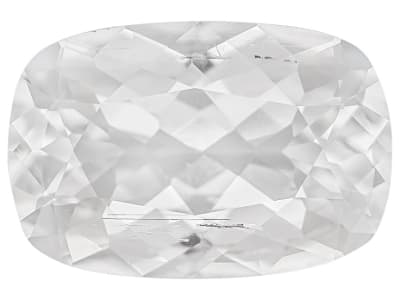Hambergite is an often colorless gemstone named in honor of Swedish mineralogist A. Hamberg. While it is durable enough to wear in jewelry, hambergite is most commonly seen in specimen form. Rarely is a specimen flawless, and it can be easily confused with colorless quartz since they are similar in appearance. A unique characteristic of hambergite is its prefect cleavage that makes faceting into a gemstone very difficult for cutters.
General Information
Common Name
Hambergite
Species
Hambergite
Transparency
Transparent - Translucent
Dispersion
Strength: Weak Fire Value: 0.015
Refractive Index
1.553-1.631
Birefringence
0.071- 0.080
Optic Character
Biaxial
Optic Sign
Positive
Polariscope Reaction
Aggregate (AGG), Doubly Refractive (DR)
Fluorescence
SWUV: inert to weak yellowish white
LWUV: Inert to weak orange
LWUV: Inert to weak orange
Pleochroism
Unobservable
Hardness
7.5
Streak
White
Specific Gravity
2.330-2.370 Typical:2.350
Toughness
Poor
Luster
Vitreous
Fracture
Conchoidal
Cleavage
Perfect, in one direction, Good, in one direction
Chemical Name
beryllium borate
Chemical Formula
Be2BO3(OH)
Crystal System
Orthorhombic
Chemistry Classification
Borate
Hambergite Colors
-
 Colorless
Colorless -
 Gray
Gray -
 White
White -
 Yellow
Yellow
Countries of Origin
Myanmar; Afghanistan; Argentina; Russian Federation; Czechia; Japan; United States of America; Madagascar; Portugal; Canada; Mozambique; Pakistan; Unknown; Norway; China; Italy; Australia; Nepal; Tajikistan
Care
Normal care

